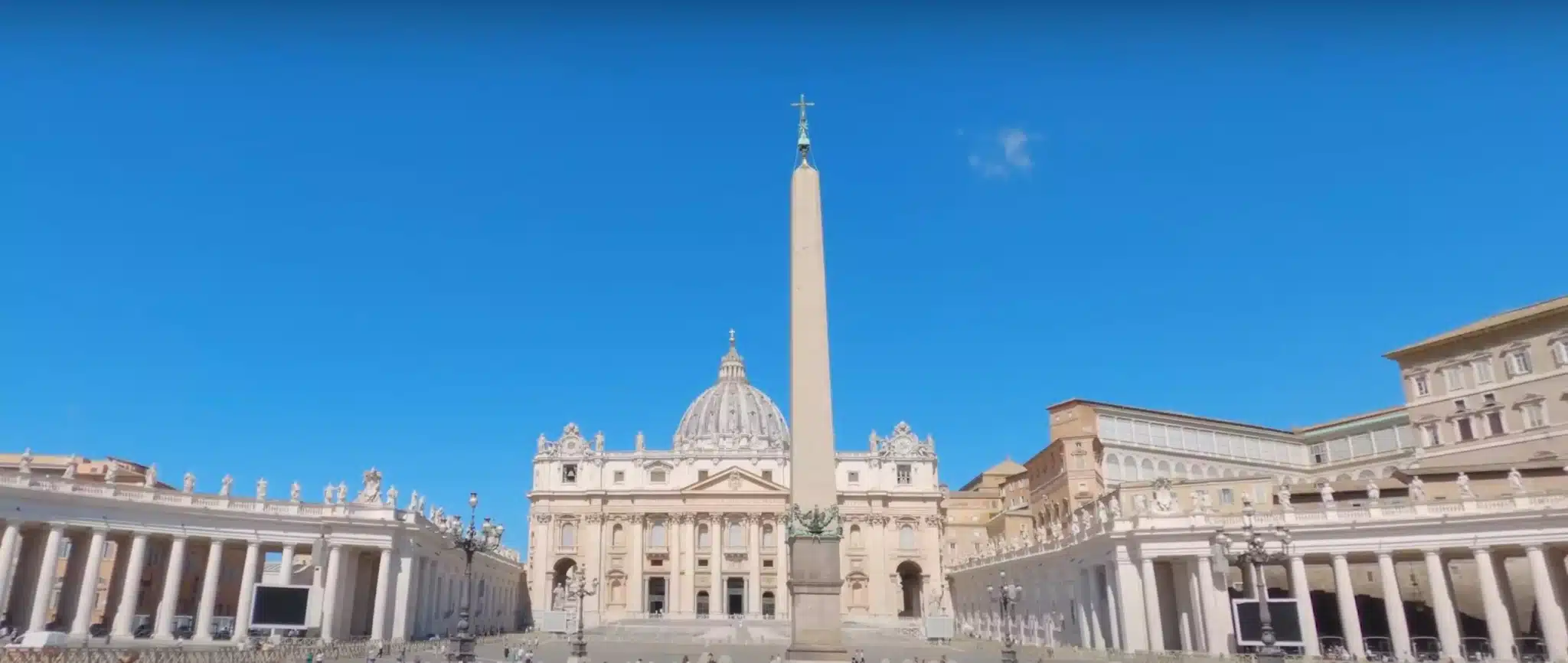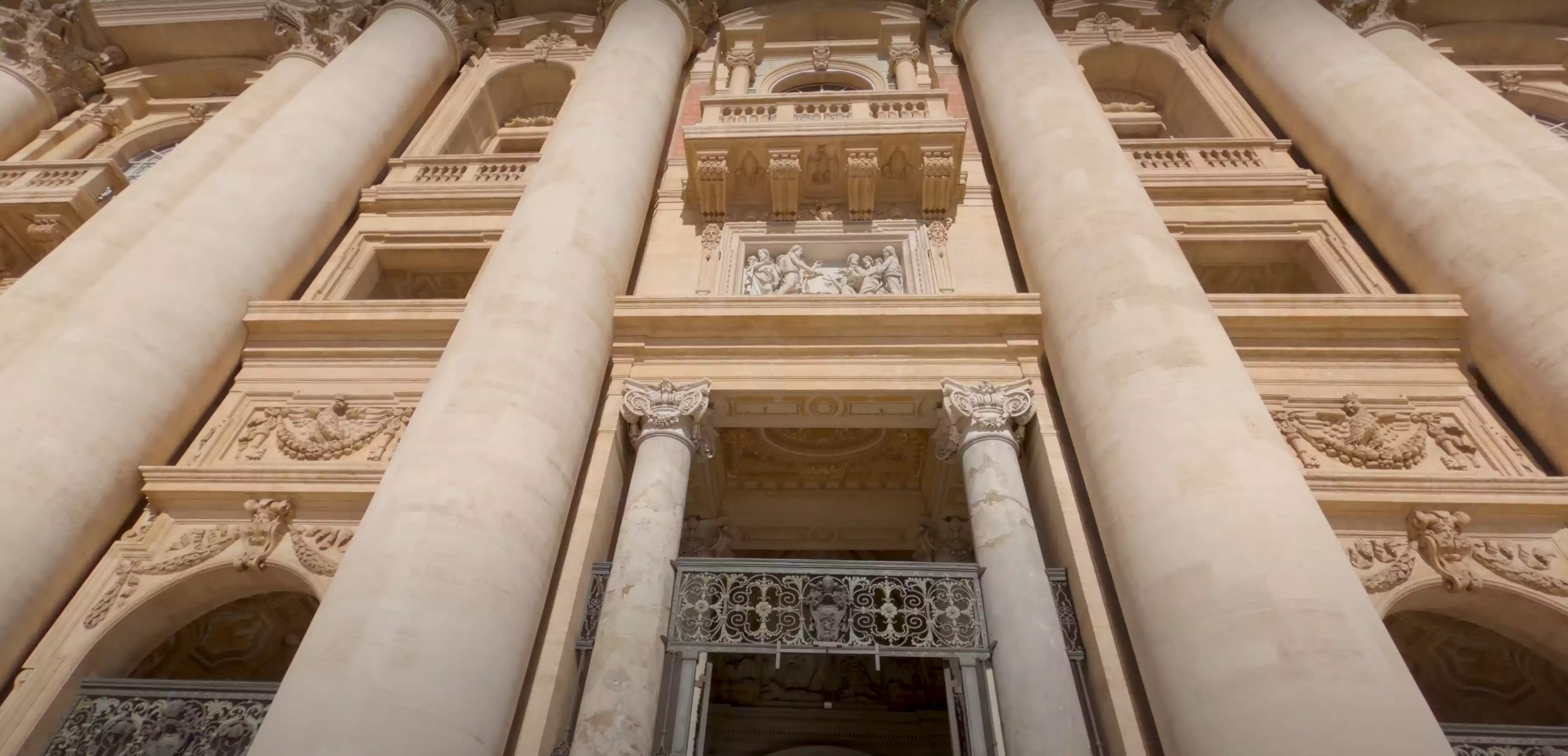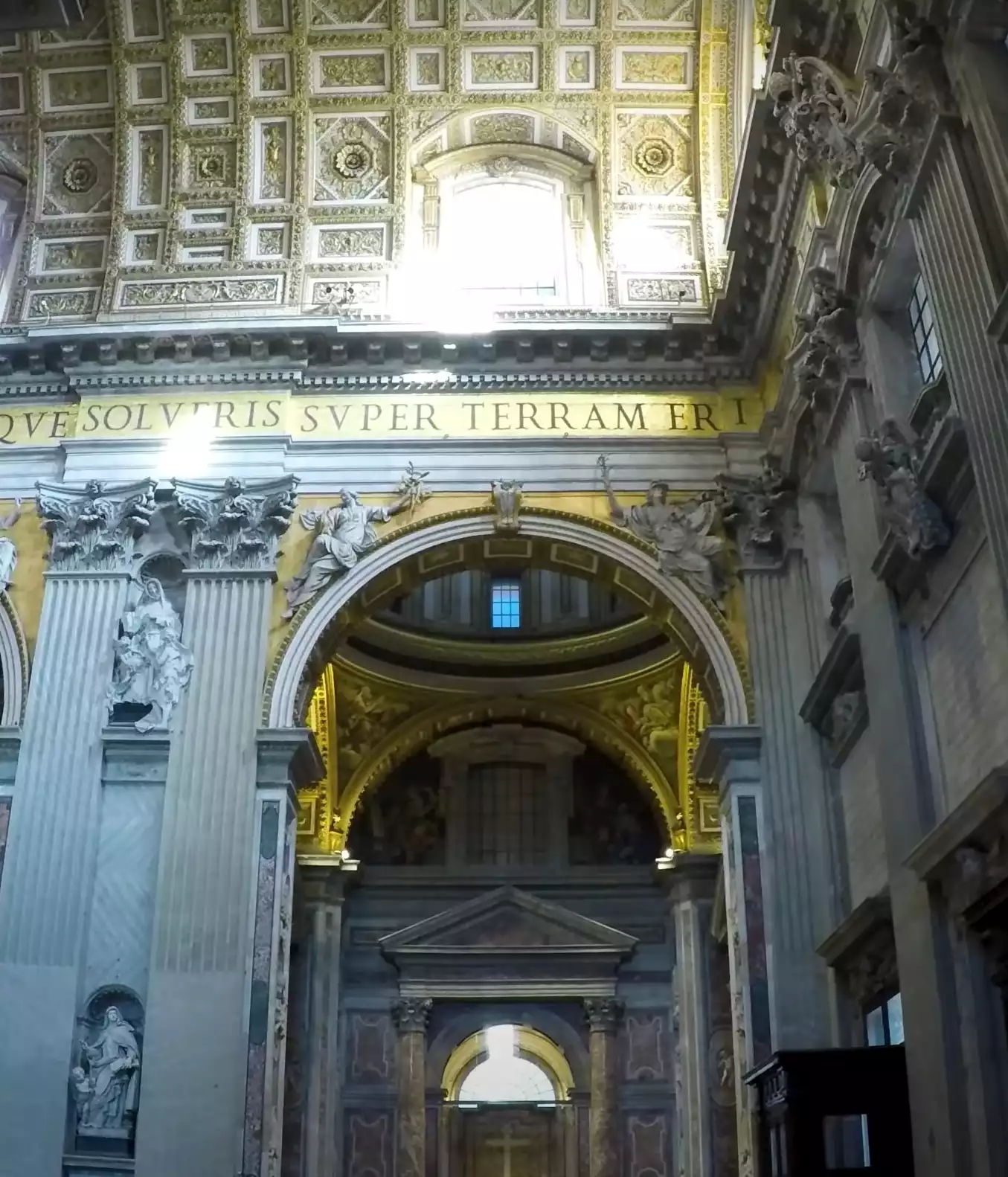
St. Peter’s Basilica in Rome stands as a monumental beacon of faith and artistry, captivating visitors with its spiritual significance and architectural grandeur. This iconic basilica, one of the largest churches in the world, serves not only as a central place of worship but also as a testament to centuries of Christian history and artistic endeavor.
Definition and Significance
St. Peter’s Basilica is a Renaissance-era church located in Vatican City, an independent city-state enclaved within Rome, Italy. Renowned for its imposing dome, designed by Michelangelo, and its opulent interior, the basilica is a prime example of Renaissance architecture. It has been a pilgrimage site for centuries, attracting millions of visitors annually. The basilica’s central role in Catholicism is underscored by its position as the burial site of Saint Peter, one of the twelve apostles of Jesus and the first Bishop of Rome, making it a place of profound religious importance.
Architectural Marvel
The architectural design of St. Peter’s Basilica is a harmonious blend of Renaissance and Baroque styles, showcasing the creative genius of some of history’s most renowned artists and architects, including Michelangelo, Bramante, Bernini, and Maderno. Its massive dome, one of the largest in the world, dominates the Roman skyline, symbolizing both the heavens and the expansive reach of the Catholic Church.
The basilica’s interior is equally awe-inspiring, with vast aisles leading to the ornate papal altar, situated directly above Saint Peter’s tomb. The artistry within the basilica, from Michelangelo’s Pietà to the stunning bronze canopy over the altar by Bernini, reflects the pinnacle of artistic achievement in the service of faith. This extraordinary fusion of art and spirituality has made St. Peter’s Basilica not only a central place of worship but also a destination for art lovers and historians, embodying the intersection of faith, art, and history.

Historical Evolution
The history of St. Peter’s Basilica in Rome is a narrative of religious devotion, artistic innovation, and political influence, spanning over two millennia. The current structure, a masterpiece of Renaissance architecture, stands on the site of an earlier 4th-century church commissioned by Emperor Constantine the Great. This earlier basilica was erected over what was believed to be the burial place of Saint Peter, thereby establishing a continuous Christian presence at this sacred location.
The decision to rebuild the basilica in the 16th century was driven by both religious and aesthetic considerations. The dilapidated state of the old church necessitated a structure that would not only serve as a fitting tribute to Saint Peter but also reflect the grandeur of the Catholic Church during the Renaissance. This ambitious project attracted the era’s most brilliant minds, turning the basilica into a canvas for showcasing the Renaissance’s artistic and architectural innovations.
Pope Julius II laid the cornerstone in 1506, marking the beginning of a construction period that would span over a century. The involvement of prominent architects like Bramante, Raphael, and Michelangelo brought a succession of design changes, each contributing to the basilica’s unique blend of artistic styles. Michelangelo’s appointment in 1547, at the age of 72, was particularly significant. His vision for the dome, completed posthumously, would become an iconic symbol of both the basilica and the city of Rome.
The completion of the nave and the facade by Carlo Maderno in 1612 marked the basilica’s transformation into its present form. Gian Lorenzo Bernini’s contributions in the mid-17th century, including the design of the opulent Baldachin over the papal altar and the expansive St. Peter’s Square, added the final touches to this architectural masterpiece.
The basilica’s construction coincided with significant periods in Church history, such as the Protestant Reformation and the Catholic Counter-Reformation. It became a physical manifestation of the Catholic Church’s resilience and influence, serving as a focal point for religious and cultural life in Europe.
The ongoing restoration and maintenance efforts throughout the centuries have ensured that St. Peter’s Basilica continues to stand as a symbol of the enduring legacy of the Catholic Church, embodying centuries of history, faith, and artistic achievement.

Artistic Treasures
St. Peter’s Basilica in Rome houses an unparalleled collection of artistic masterpieces, each contributing to its status as a treasure trove of Renaissance and Baroque art. The interior of the basilica is a visual feast, adorned with works by some of the most celebrated artists in history.
Michelangelo’s Pietà, a sculpture of the Virgin Mary holding the body of Christ, is a profound expression of grief and devotion. Created when Michelangelo was only in his twenties, this masterpiece is renowned for its exquisite portrayal of emotion and its remarkable detail, particularly in the depiction of the figures’ clothing and anatomy.
The awe-inspiring dome, Michelangelo’s crowning achievement, is painted with a mesmerizing array of frescoes. Its grandeur not only enhances the spiritual atmosphere but also demonstrates the artist’s mastery in creating an illusion of space and depth, a testament to his ingenuity and artistic vision.
Gian Lorenzo Bernini’s Baldachin, a towering bronze canopy over the papal altar, exemplifies Baroque artistry. Its intricate details and dramatic use of space and light serve to direct attention to the altar, emphasizing its spiritual significance. Bernini’s design for the Chair of Saint Peter, an ornate, gilded bronze sculpture, further contributes to the basilica’s artistic legacy.
These masterpieces, along with numerous other statues, mosaics, and architectural elements, create an environment where art and faith intersect, making St. Peter’s Basilica not only a place of worship but also a gallery of historical and artistic significance.

Architectural Features and Design
St. Peter’s Basilica in Rome, a marvel of architectural design, showcases a fusion of Renaissance and Baroque elements, each contributing to its majestic presence. The basilica’s structure and layout reflect both the artistic vision of its creators and the religious purpose it serves.
The central feature of the basilica is undoubtedly its imposing dome, designed primarily by Michelangelo. With a diameter of approximately 42 meters, it stands as one of the largest domes ever constructed, a testament to the advanced engineering skills of the Renaissance. The dome’s interior is adorned with intricate frescoes, and its external elevation provides a dominant feature in the Roman skyline.
The façade of the basilica, completed by Carlo Maderno, presents a harmonious blend of classical elements. Its balanced proportions and use of pilasters and columns draw inspiration from ancient Roman architecture, symbolizing the Church’s strength and stability. The central balcony, known as the Loggia of the Blessings, is a focal point for papal addresses, linking the basilica to significant religious and historical events.
Inside, the basilica’s nave stretches over 185 meters, leading the eye towards the opulent papal altar. The interior is divided by massive pillars supporting the dome, creating a sense of awe and reverence. The use of space, light, and proportion in the nave demonstrates a masterful understanding of architectural principles, creating an environment that is both grand and spiritually uplifting.
The basilica’s numerous chapels, each dedicated to different saints and adorned with artistic works, add to the building’s complexity and spiritual depth. The use of marble, gilding, and colorful mosaics throughout the interior emphasizes the basilica’s role as a house of worship and a repository of religious art.
St. Peter’s Basilica’s design is not just an artistic achievement but also a physical representation of the Church’s ideals and teachings. The interplay of light and space, the grandeur of its dome, and the intricate details of its interior all work together to create an atmosphere of divine presence and religious contemplation.

Religious and Cultural Impact
St. Peter’s Basilica in Rome transcends its physical presence, exerting a profound influence on both religious practices and cultural perceptions worldwide. As a central hub of Catholicism, it has been a venue for significant religious events, including papal ceremonies and public addresses. Its role in the Catholic Church extends beyond a mere architectural wonder, serving as a symbol of faith and a testament to the Church’s historical resilience.
The basilica’s impact on the arts, particularly during the Renaissance and Baroque periods, has been monumental. It has inspired countless artists, architects, and musicians, who have drawn from its grandeur and sanctity. The influence of St. Peter’s Basilica on church architecture can be seen in numerous cathedrals and churches across the globe, mirroring its design and spiritual symbolism.
The annual gatherings and celebrations at St. Peter’s Square, especially during Easter and Christmas, highlight the basilica’s role in bringing together people from diverse backgrounds in shared faith and fellowship. These events, often presided over by the Pope, are broadcast worldwide, extending the basilica’s reach and impact.
Moreover, St. Peter’s Basilica stands as a beacon of hope and a reminder of the enduring nature of spiritual and artistic pursuits in the face of changing times and challenges. It continues to attract millions of pilgrims and tourists, who come to experience its splendor and the profound sense of peace and spirituality it offers.
References
- Bramante, et al. “Saint Peter’s Basilica.” Khan Academy. Accessed 31 December 2023. Khan Academy.
- “The Basilica of St. Peter: No Words to Describe.” SAH Blog. Society of Architectural Historians. Accessed 31 December 2023. SAH.
- “St. Peter’s Basilica.” Rome Museum. Accessed 31 December 2023. Rome Museum.
- “St. Peter’s Basilica – A Brief History.” StPetersBasilica.info. Accessed 31 December 2023. StPetersBasilica.info.
- “St. Peter’s Basilica.” Smarthistory. Accessed 31 December 2023. Smarthistory.
